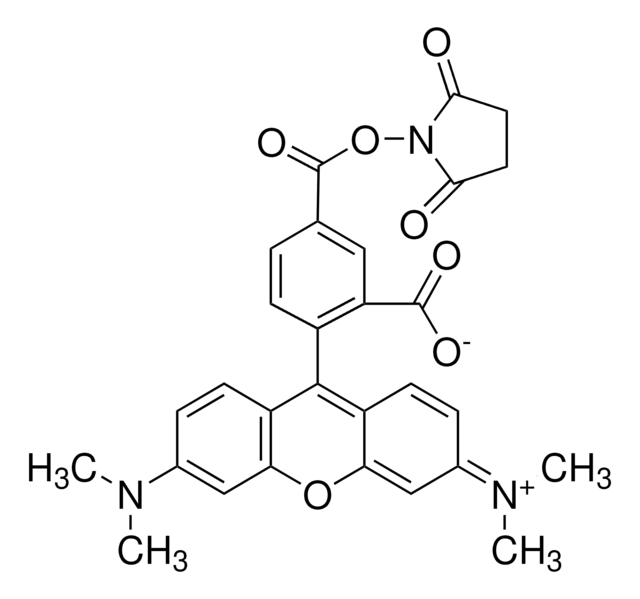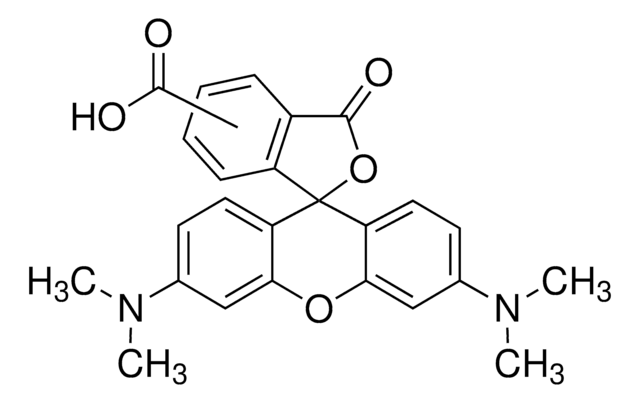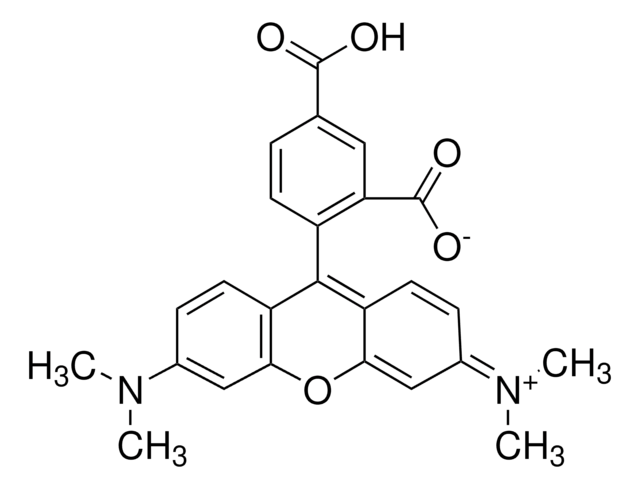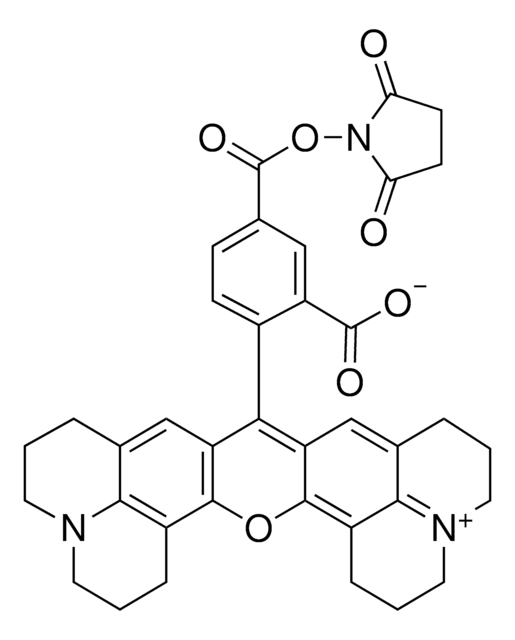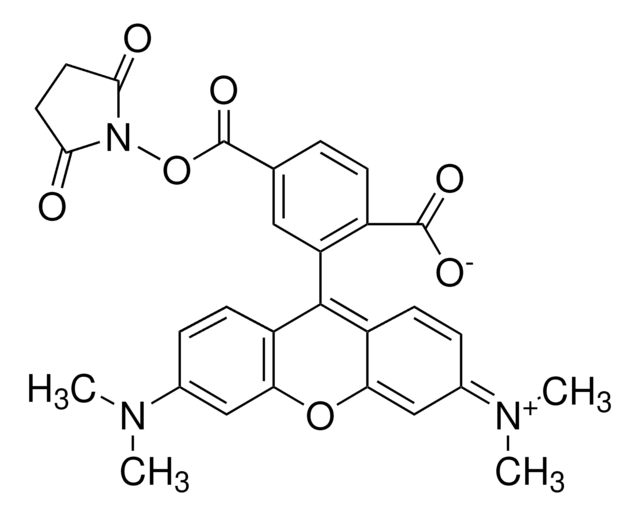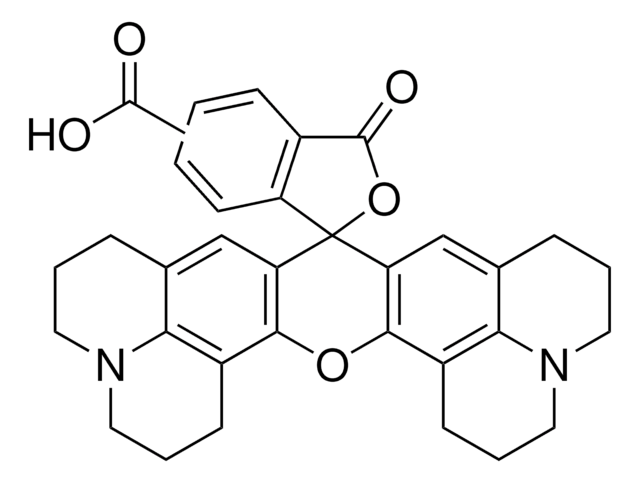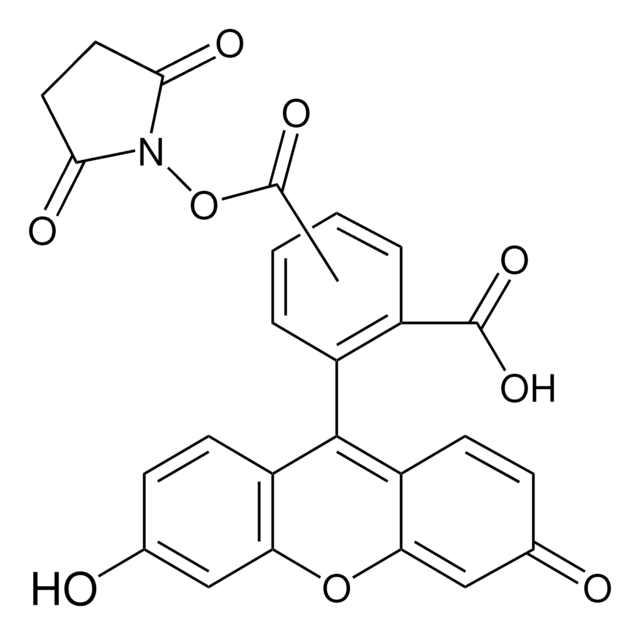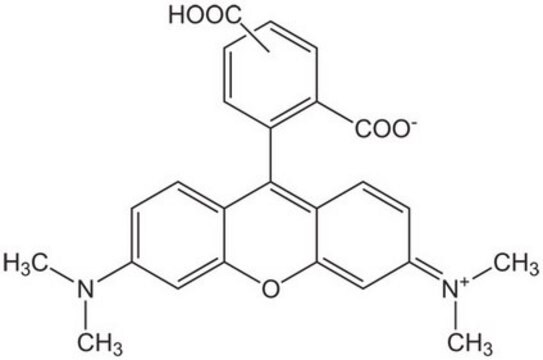21955
5(6)-Carboxytetramethylrhodamine N-succinimidyl ester
BioReagent, suitable for fluorescence, ≥70% (coupling to amines)
About This Item
Productos recomendados
product line
BioReagent
Quality Level
assay
≥70% (coupling to amines)
form
powder
solubility
DMF: soluble
acetonitrile: soluble
methanol: soluble
fluorescence
λex 543 nm; λem 576 nm in methanol
λex 554 nm; λem 584 nm in 0.1 M phosphate pH 8.0
suitability
suitable for fluorescence
storage temp.
−20°C
SMILES string
CN(C)c1ccc2c(Oc3cc(ccc3C24OC(=O)c5cc(ccc45)C(=O)ON6C(=O)CCC6=O)N(C)C)c1
InChI
1S/C29H25N3O7/c1-30(2)17-6-9-21-23(14-17)37-24-15-18(31(3)4)7-10-22(24)29(21)20-8-5-16(13-19(20)28(36)38-29)27(35)39-32-25(33)11-12-26(32)34/h5-10,13-15H,11-12H2,1-4H3
InChI key
CXYYHBMOVJJZTD-UHFFFAOYSA-N
¿Está buscando productos similares? Visita Guía de comparación de productos
Application
Packaging
Other Notes
¿No encuentra el producto adecuado?
Pruebe nuestro Herramienta de selección de productos.
Storage Class
11 - Combustible Solids
wgk_germany
WGK 3
flash_point_f
Not applicable
flash_point_c
Not applicable
ppe
Eyeshields, Gloves, type N95 (US)
Elija entre una de las versiones más recientes:
¿Ya tiene este producto?
Encuentre la documentación para los productos que ha comprado recientemente en la Biblioteca de documentos.
Nuestro equipo de científicos tiene experiencia en todas las áreas de investigación: Ciencias de la vida, Ciencia de los materiales, Síntesis química, Cromatografía, Analítica y muchas otras.
Póngase en contacto con el Servicio técnico